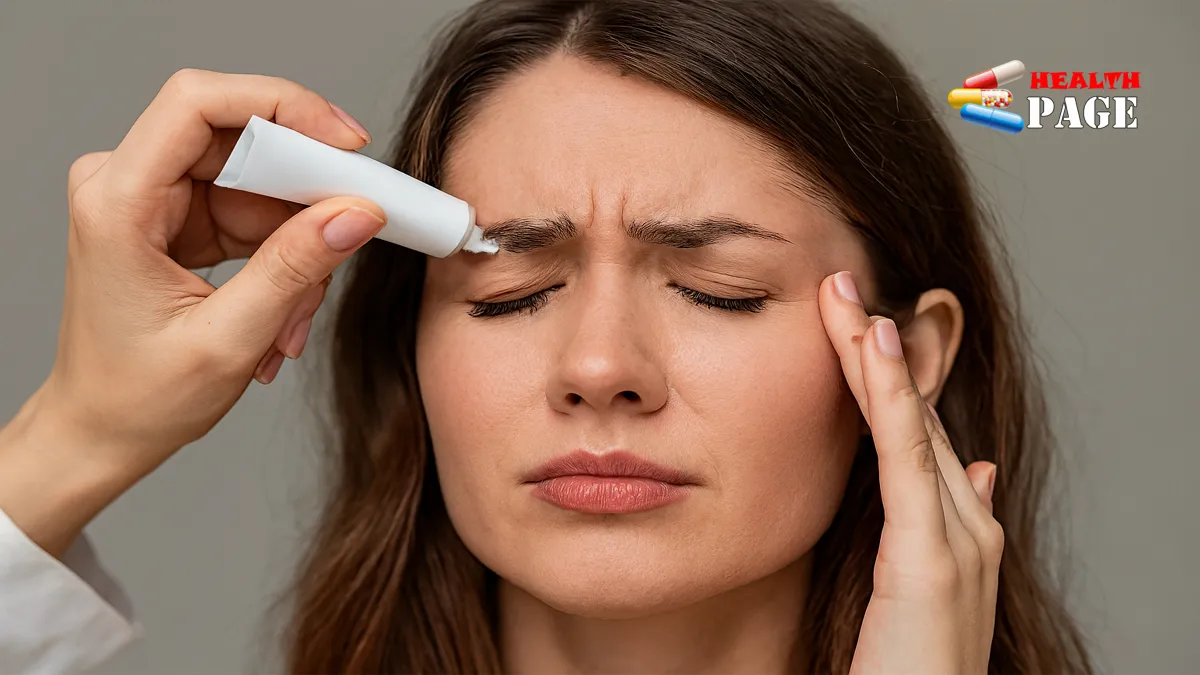
How to use erythromycin eye ointment correctly?
In many families’ medicine cabinets, erythromycin eye ointment was once a trusted “miracle anti-inflammatory” for mothers. In the past, whether it was a child’s slightly red eye, a small blister on the corner of their mouth. Or a minor abrasion, mothers would immediately think of eye ointment, as if it could solve all inflammatory problems. However, erythromycin eye ointment has gradually lost its appeal, and there are many reasons behind this.
Mechanism of action and original uses of erythromycin eye ointment
Erythromycin eye ointment’s main ingredient, erythromycin, belongs to the macrolide antibiotics . Its antibacterial mechanism is to inhibit bacterial protein synthesis, thereby exerting its antibacterial effect. Initially, it was mainly use to treat eye diseases caused by bacterial infections. Such as blepharitis, where patients typically experience itching and stinging along the eyelid margins, and in severe cases, peeling. Eye ointment can effectively relieve these symptoms. It is also used for conjunctivitis , where the eyes become red, sting, and have increased discharge. Erythromycin eye ointment can fight the infection and reduce inflammation. Trachoma is also one of its indications; eye discomfort caused by Chlamydia trachomatis infection. Such as photophobia and tearing, can also be improved with erythromycin eye ointment.
Erythromycin eye ointment becomes a popular household remedy.
Because of its remarkable effectiveness in treating bacterial eye infections, mothers have discovered that it seems to have some “additional benefits.” For example, when a child’s lips are chapped, applying a little erythromycin eye ointment quickly relieves the dryness and cracking. This is because the petrolatum, lanolin, and other excipients in the erythromycin eye ointment have a moisturizing effect. When there are minor abrasions on the skin, applying eye ointment can prevent wound infection. It promote wound healing to some extent, which makes mothers even more convinced of its anti-inflammatory capabilities. Gradually, the use of erythromycin eye ointment in the home has become more and more widespread, almost becoming a panacea for inflammation.
The reason for the “collapse” of erythromycin eye ointment
Misuse Leads to Bacterial Resistance
When erythromycin eye ointment is frequently used in inappropriate situations. Such as for minor skin inflammations that may not be caused by bacterial infection. Bacteria are exposed to erythromycin for extended periods. Over time, bacteria gradually adapt to this drug environment and develop resistance. Once bacteria develop resistance, the previously effective eye ointment may no longer be effective against diseases truly caused by bacterial infections. This is similar to how, on the battlefield, if the enemy becomes familiar with our tactics. Our tactics become less effective. Research indicates that the misuse of antibiotics (including topical antibiotics like eye ointment) is a significant cause of increased bacterial resistance.
It’s not suitable for all inflammations
Inflammation has many causes, and not all inflammations are caused by bacterial infections. For example, erythromycin eye ointment is ineffective in treating viral conjunctivitis caused by a viral infection. The erythromycin has no inhibitory or bactericidal effect on viruses. Similarly, using erythromycin eye ointment for symptoms like itchy, red, and swollen eyes caused by allergies is also incorrect. In these cases, anti-allergy medications are needed to relieve the allergic reaction. Incorrectly using eye ointment in these situations not only fails to relieve symptoms. But may also delay treatment and cause the condition to worsen.
Risk of adverse reactions
Although erythromycin eye ointment is a topical medication, it can still cause adverse reactions. Some people may experience allergic reactions such as eye irritation and redness after use, and occasionally eye pain and changes in vision may occur. The risk of adverse reactions is relatively higher, especially for children, the elderly, and people with weakened immune systems. Furthermore, improper storage, such as excessively high ambient temperatures (erythromycin eye ointment is generally stored between 2-25℃), excessive humidity, or direct sunlight, can cause the ointment to deteriorate. Using deteriorated ointment may cause greater harm to the eyes or skin.
Risk of Confusion with Other Medications
Many people easily confuse erythromycin eye ointment with erythromycin ointment. Erythromycin ointment also contains erythromycin, but it is primarily used for skin problems such as impetigo and other purulent skin diseases, infected ulcers, and small-area burns. Although both contain erythromycin, their concentrations, manufacturing processes, indications, and contraindications differ significantly. Erythromycin eye ointment typically contains 0.5% erythromycin, precisely calculated for ocular use, while erythromycin ointment contains 1% erythromycin, making it more suitable for skin infections.
Eye ointment is manufactured entirely in a sterile environment, resulting in a finer base, while ointment production allows for trace amounts of microorganisms, and the base may contain residual oxidizing agents. If ointment is mistakenly applied to the eyes, it may burn the cornea. Statistics show that over 68% of drug-induced keratitis cases are caused by the accidental application of ointment to the eyes.
Correct understanding and use of erythromycin eye ointment
Erythromycin eye ointment is not completely ineffective; it remains a valid treatment for eye diseases caused by bacterial infections. However, we must view and use it correctly. When experiencing eye discomfort, do not blindly use erythromycin eye ointment on your own. Consult a doctor first to confirm that the illness is caused by a bacterial infection, and then use it appropriately under the guidance of a physician. Also, if both erythromycin eye ointment and erythromycin ointment are present in your home medicine cabinet, be sure to distinguish them, store them separately, and label them clearly to avoid confusion. In short, we must respect the characteristics and uses of medications and use them rationally to ensure that medications better serve our health.


2 thoughts on “How to use erythromycin eye ointment correctly?”